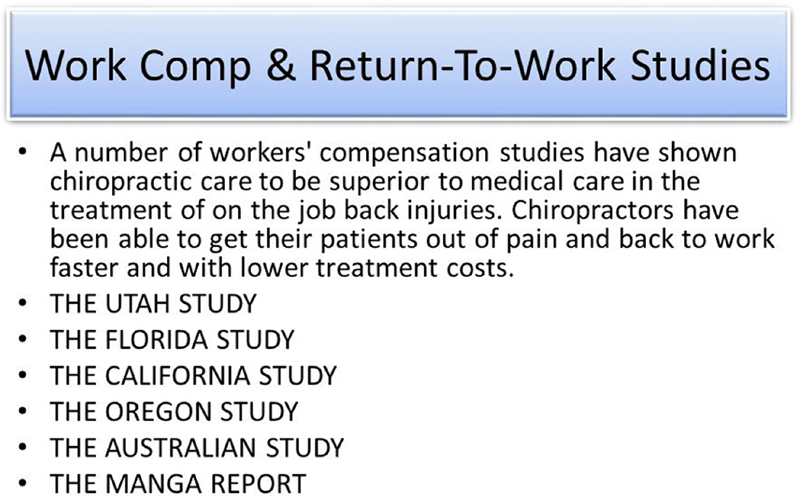Chiropractic Care for Spinal Whiplash Injuries
SOURCE: J Orthopaedic Medicine 1999; 21 (1): 22–25
By David BenEliyahu, D.C.
Studies on the efficacy of chiropractic care for patients suffering with pain secondary to whiplash injury are appearing in the literature. In 1996, Woodward et al. published a study in Injury on the efficacy of chiropractic treatment of whiplash injuries. [1] The authors of this study were from the Department of Orthopedic Surgery in Bristol, England.
In 1994, Gargan and Bannister published a paper on the recovery rate of patients with whiplash injuries and found that if patients were still symptomatic after three months, there was almost a 90% chance they would remain so. [2] No conventional medical treatment has been shown to be effective in these established chronic whiplash injury patients. [3, 4] However, most DCs treating whiplash injury patients have empirically found high success rates in the recovery of these types of patients.
In the Woodward study, 93% of the 28 patients studied retrospectively were found to have a statistically significant improvement following chiropractic care. [1] Chiropractic care in this study consisted of spinal manipulation, PNF and cryotherapy. Most of the 28 patients had prior treatment with NSAIDs, soft collars and physiotherapy. The average length of time before the patients began chiropractic care was 15.5 months post-MVA (range of 3-44 months).
This study clearly documented what most DCs experience in clinical practice: that chiropractic care is an effective modality for patients injured in a motor vehicle accident. Symptoms ranging from headaches to neck pain, back pain, interscapular pain and related extremity pain with paresthesias all respond to quality chiropractic care.
There are more articles like this @ our:
The literature has also suggested that cervical disc injuries are not uncommon after whiplash injury. [5] In a study published on chiropractic care for disc herniations, I demonstrated that not only do patients improve clinically, repeat MRI imaging demonstrates decreased size or resolution of the disc herniation in many cases. 6 Of the 28 patients studied and followed, several had post-MVA disc herniations that responded well to chiropractic care, with good clinical and anatomical outcome. [6, 7] In a recent retrospective study by Khan et al., published in the Journal of Orthopedic Medicine, on whiplash injured patients with respect to cervical pain and dysfunction, patients were stratified into groups based on degrees of good outcome to chiropractic care: [8]
Group I: Patients with neck pain only and restricted neck ROM. Patients had a “coat hangar” distribution of pain with no neurologic deficits; 72% had a good outcome.
Group II: Patients with neurological symptoms or signs and restricted spinal ROM. Patients had tingling, numbness and parasthesias in the extremity; 94% had a good outcome.
Group III: Patients had severe neck pain with full neck ROM and bizarre pain distributions in the extremities. These patients often described blackouts, nausea, vomiting, chest pain and visual dysfunction; 27% had a good outcome.
Read the rest of this Full Text article now!





Leave A Comment